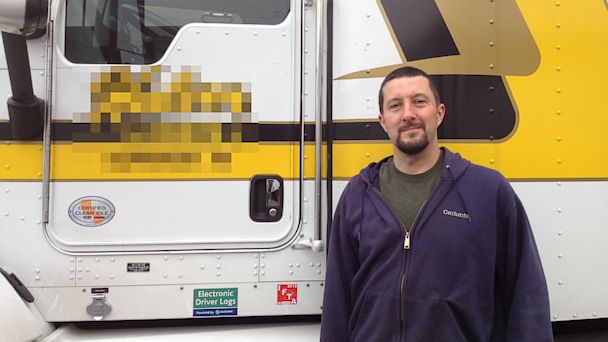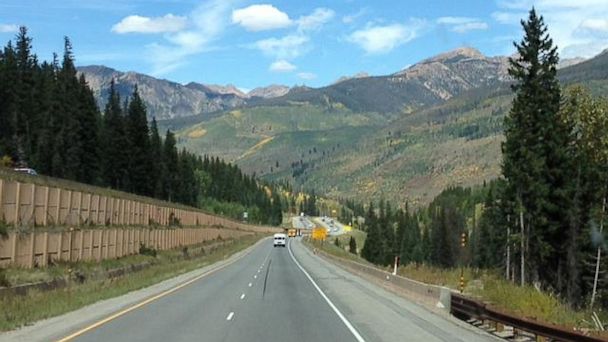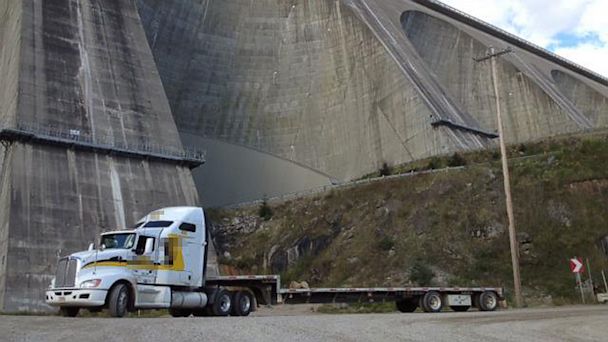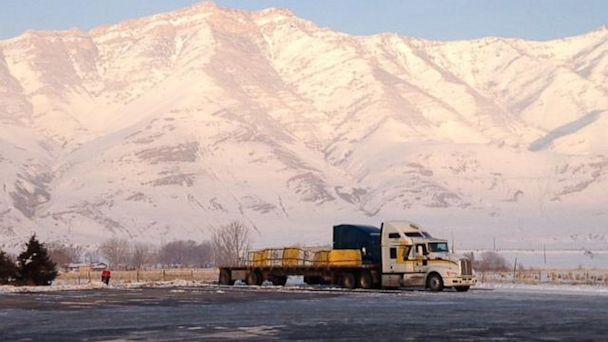'Trucking Isn't a Job or a Career, It's a Lifestyle': A Trucker's Story
Loren West, a former long-haul trucker from Wisconsin, gave ABC News "20/20? a glimpse of what life is like behind the wheel of a big rig. After spending 15 months on the road, West has decided to take a break from trucking. He is substitute teaching high school English and spending nights at home with his family, but he isn't ruling out another stint behind the wheel.
Below, West reflected on becoming one of America's roughly 1.6 million truck drivers, and what it means to crisscross the country to make a living.
Tune in to ABC's "20/20? this Friday, Nov. 22 at 10 p.m. ET

Credit: Courtesy Loren West
By Loren West
Challenges have always motivated me. I've run a marathon, gone skydiving, boxed in a sanctioned boxing match, raced a stock car and played on stage in a rock band. So when I felt the urge to make a career change, my wife suggested the challenge of getting my commercial driver's license and becoming an over-the-road trucker. I love to drive and I've always been a gearhead, so I went for it.
Graduating CDL (commercial drivers license) school and hiring on with a reputable company went well. It wasn't until I began my first run with a company trainer that the enormity of the challenge ahead set in. Traffic jams, blinding sun, freezing rain and road construction are conditions most commuters deal with on their way to work, but truckers deal with these obstacles (and many more) all day and every day as part of daily life. Multiply that times 18 wheels, 80,000 pounds, and a 70-foot rig, and it equates to a grueling way to earn a living. I worked in an office for 13 years and I used to gripe about my job being impossible to bear when the copy machine ran out of paper or someone stole my yogurt from the break-room refrigerator.
As I became comfortable behind the wheel, and confident in my ability to get from point A to point B without wrecking anything, I began to contemplate the bigger picture of being a trucker. Aside from being a professional athlete, how many other jobs do you get to wake up in Boston and go to sleep in Philadelphia? Or, see the Gateway Arch in St. Louis and the bayous of Baton Rouge in the same day - and get paid for it?
I enjoy posting pictures and video of the views from my "office window" on my Facebook page. Many of my followers marvel at the places I've been and tell me how fortunate I am to live this kind of life. With only 15 months of lugging loads from coast to coast, there's still so much of this country I haven't seen - and probably never will. In my short time on the road I've logged over 150,000 miles and crossed the borders of 44 states and four Canadian provinces.

Loren snapped this photo while lugged a load of pipe from Warren, Ohio to Henderson, Colo., an industrial suburb of Denver. Credit: Courtesy Loren West

Loren's rig at the Daniel-Johnson hydroelectric dam in Quebec, Canada. Credit: Courtesy Loren West
When non-trucking people find out I'm a trucker, I'm often faced with a barrage of questions about the nomadic lifestyle, like "What's your favorite…?" or "Have you ever been to…?" My answers usually change as I see more places and gain new experiences.
When asked to choose the most memorable city I've driven through, my answer varies based on scenery or ease of driving. For example, Pittsburgh, with its juxtaposition of skyscrapers and vintage iron bridges nestled in a valley among the confluence of three rivers, always makes me want to return on foot to explore what I can't see through the windshield. But because it's an old city hemmed in by steep hills, undergoing considerable refurbishing, it can make for 20 minutes of white knuckling when you realize the directions you were given are incomplete. For a Wisconsin farmlander like me, taking dispatches to any city east of the Mississippi and north of the Mason Dixon line makes me wish I would have tried harder in high school.
Not long after the miles piled up and the wanderlust wore off, I concluded that truck driving is basically a factory job with a pleasant view. Long hours, low pay and constant deadlines are unavoidable. Couple that with endless government oversight, a lack of trucker-friendly facilities and being away from home for weeks at a time, and it creates what is termed among industry analysts as "churn and burn." Carriers around the country face a serious shortage of drivers willing to put up with the demands faced in today's driving environment.

Loren's rig near Wyoming's snow-covered mountains on one side and Great Salt Lake on the other. Credit: Courtesy Loren West

Loren snapped this photo looking out to the Columbia River in Wasco, Ore., while in route from Canada to Portland, Ore. Credit: Courtesy Loren West
After this past year-and-a-half I've gained an enormous amount of respect for the men and women who pilot their rigs through dangerous neighborhoods and weave past and through a motoring public more concerned with checking their phones than checking their mirrors.
Without truckers America's economy would come to a standstill within three days. It's a common saying among truckers that trucking isn't a job, or a career - it's a lifestyle. If that lifestyle continues to become even more difficult, keeping the safest and most dedicated drivers behind the wheel will be industry's biggest challenge.
Of the places I've been, here's my best/worst list in two random categories.
Most Scenic Routes:
- Highway 83N from I-90 at Vivian to Pierre, S.D. (32 miles of land so flat and barren it allows for visibility in distances seldom seen in other places)
- Route 389N from Baie-Comeau, Quebec, to Labrador City, Newfoundland (a 9-hour, 365 mile stretch of isolated wilderness featuring a hairpin 18-percent gravel grade onto a one-lane bridge over a dizzying gorge at the base of Manicougar Dam)
- Interstate 70 from Denver to Gypsum, Colo.
- Interstate 68 across the panhandle of Maryland from Frostburg to Hagerstown.
Least-Liked Cities to Drive:
- Boston, Mass. - Though I've never been within the city limits, the older outlying areas are narrow, crowded, fast traffic, low-hanging wires, limited parking, etc.
- Montreal, Quebec - Crumbling infrastructure, crowded, all French street signs
- Chicago - from Beloit, Wis., to Gary, Ind., no matter what route you choose, it takes 2.5 hours
- Brooklyn, N.Y. - One-way streets and Verrazano Bridge congestion.